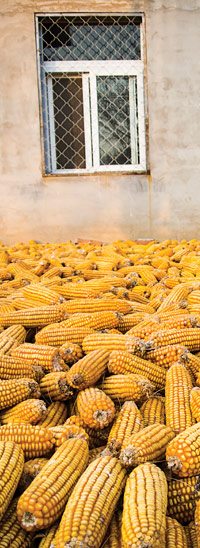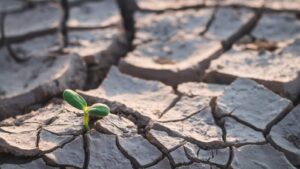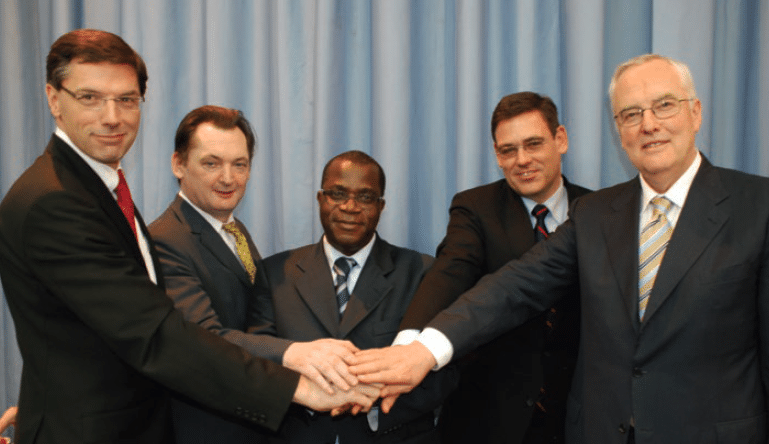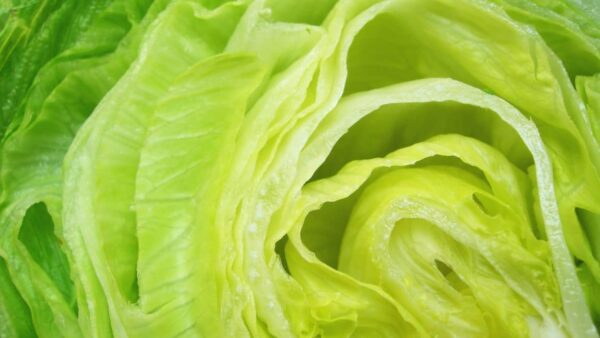
An in-depth overview of the global seed industry. From a prize-winning conference in Brazil to new methods for greening the desert in Qatar.
STATUS ISF
Last December, the prize ceremony of the annual Brazilian Premio Caio, which rates events and services in Brazil, was held in Sao Paulo. The International Seed Federation is proud to announce that the ISF World Seed Congress 2012 held in Rio, Brazil, was awarded second place in the category “International Congress.” Among all the international events which took place in Brazil in 2012, the ISF World Seed Congress, co-organized by the Brazilian Seed Association, F&B EVENTOS and ISF, was second only to the UN Rio +20 conference. The congress brought together more than 1,000 participants from 34 different countries, generating a volume of $3 billion in business.
The Caio Award, organized by Eventos Expo Editores, was created in 1999 with the objective to encourage, recognize and value the work of companies and professionals of the Brazilian Industry of Events, providing recognition in its segment and the media.
Officially supported by representative organizations belonging to the segments of events, sales promotion, promotional marketing and business tourism, the Caio Award has the mission to promote, disseminate and enhance the use of the most modern and effective marketing tools available to those companies, choosing the best professionals, ventures, and enterprises in these sectors in the country.
The name of the award is a tribute to Caio de Alcantara Machado, a pioneer professional in the sector of events and trade fairs, who is famed for creativity and success in launching new products, promotion and organization of events.
—Marcel Bruins, secretary general of ISF
STATUS CHINA
The increasing planting area of corn in China has caused pressure on soybean acreage, which has been sharply reduced in major soybean-growing areas such as northeast China, north China and the Huanghuai region. China’s total area planted to soybeans in 2012 decreased by 13.8 per cent from 2011 levels, with a five-year continuous decrease. The land contention between corn and soybeans is becoming more and more intense, and this has affected the national security of grain and oil.
However, intercropping technology is expected to ease the land contention between corn and soybean in China’s major grain-planting areas. The corn and soybean intercropping technology developed by the Jilin Academy of Agricultural Sciences enables an additional harvest of soybeans and ensures high yields in corn at the same time. The average yield of soybeans under the intercropping pattern can reach 1,100 kilograms per hectare, equivalent to half of the soybean yield under a unitary cropping pattern.
Liu Baoquan, a researcher at the Soybean Research Institute, believes that intercropping would not reduce the annual output of corn, but soybean yield would be boosted and China’s self-sufficiency in soybeans would be improved.
According to Baoquan, the corn yield under intercropping pattern could increase by 1.5 to 6.5 per cent from yields achieved under a unitary cropping pattern. Soybeans can also realize comparatively high yields under the intercropping pattern.
Gai Junyi, of the Chinese Academy of Engineering, believes the intercropping pattern for corn and soybeans would not only guarantee China’s output of grain and oil, but also play an active role in farmland protection, promoting the sustainable development of agriculture. In the major corn-planting areas, continuous corn cropping and heavy fertilizer use have caused soil compaction and fertility decreases, which has suppressed the planting efficiency of corn.
The promotion of the corn and soybean intercropping pattern would significantly increase soybean output and greatly ensure national security on grain and oil. Yang Wenyu, a soybean cultivation expert from the National Soybean Industrial Technology System, calculates that over 70 per cent of domestic soybean demand would be met independently if all 33.33 million hectares of corn-planting areas fell within the intercropping planting pattern of corn and soybeans.
—CCM International
STATUS QATAR
The first cucumbers grown in the desert using seawater and solar power were recently served to participants at the UN Climate Negotiations in Doha, Qatar. After a 10-month intense construction period, invited guests enjoyed the first tours of the Sahara Forest Project pilot facility, which were made possible by Yara International ASA, the world’s largest supplier of fertilizer; Qatari company Qafco, the world’s largest single site producer or urea and ammonia; and the Sahara Forest Project.
The Sahara Forest Project is a new environmental solution to produce food, water and energy in desert areas. “It is designed to utilize what we have enough of to produce what we need more of, using deserts, sunlight, saltwater and carbon dioxide to produce food, water, and clean energy,” says Joakim Hauge, CEO of the Sahara Forest Project.
The Sahara Forest Project combines already existing and proven environmental technologies, including saltwater-cooled greenhouses, concentrated solar power and technologies for desert revegetation around a saltwater infrastructure. The synergies arising from integrating the technologies improve the performance and economics of the system compared to those of the individual components. By establishing new vegetation in previously barren land, the system also offers the potential to store considerable amounts of carbon dioxide in new plants.
“Innovation is essential to address global challenges. The Sahara Forest Project creates a new approach to the combined issues of food, energy, fresh water and climate change,” says Ole Jørgen Haslestad, CEO of Yara International ASA.
“The partnership with Yara and Qafco is very constructive and we look forward to developing our cooperation further,” adds Hauge.
Only an hour’s drive from the pilot facility, the UN climate negotiations (COP18) took place in Doha in late 2012. “The Sahara Forest Project set out to inspire the delegates as a positive and innovative solution to fight climate change,” says Hauge. The Sahara Forest Project gained considerable attention at COP18 and was presented at two official UN side events at COP18.
The guests at the pilot facility, mainly delegates at COP18, were shown around the 10,000-square-meter facility, where they learned about the unique saltwater-cooled greenhouses, Qatar’s first operational concentrated solar plant, the region’s largest algae research facility as well as technologies for turning the desert green.















